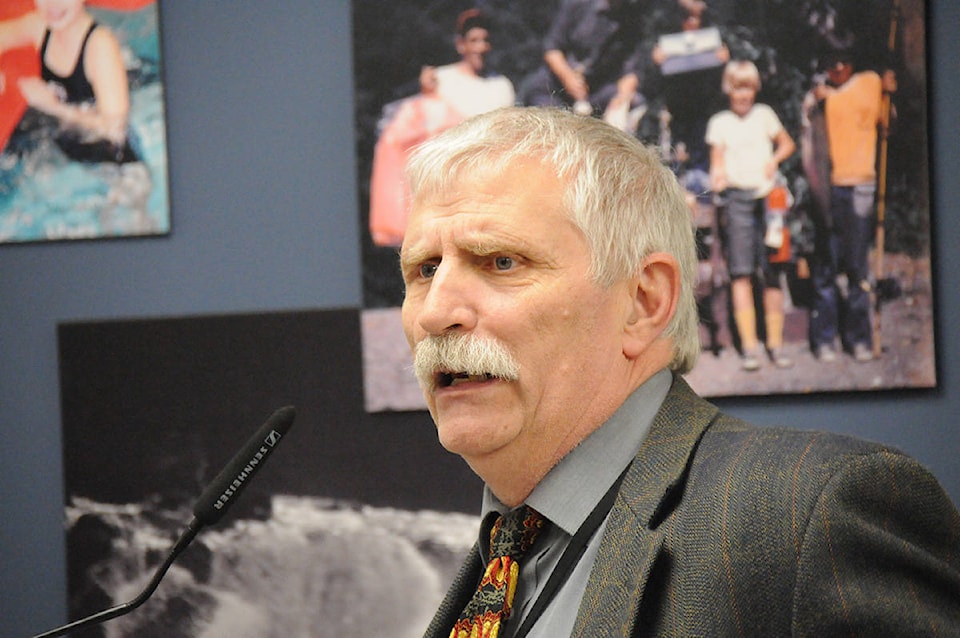Eighteen people have died of drug overdoses in Port Alberni since 2016—10 times more than the number of people who died prior to 2013, says Island Health medical health officer Dr. Paul Hasselback.
That’s 50 percent higher than the rate of overdose deaths on Vancouver Island or in B.C., Hasselback said. It means Port Alberni is one of the highest zones on the Island as far as fatalities go, he added.
British Columbia entered a state of emergency in 2017 over the opioid crisis, and Hasselback said the issue “has not been stagnant” in the Alberni Valley. While the community stepped up with programs such as the overdose prevention site, there is more to be done, he told Port Alberni’s city council.
“The good news is, in the latter half of 2017 the (fatality) rates seem to have come down.”
While the number of fatalities seems to have slowed, Hasselback said there are other changes to drug use trends that are troubling.
“In the province of B.C. we’ve seen two dozen fentanyl analogues,” some less toxic and some “up to 100 times more potent” such as carfentanil.
People using drugs have a lack of knowledge of the product they’re used to using and what it’s made up of now, and that is causing more overdoses, he explained. Those that have been using drugs on a regular basis, such as heroin, usually know how much to take. That’s not the case anymore. “We’re seeing and getting lots of reports across the province of a migration of crystal meth,” Hasselback said.
Crystal meth is associated with aggressive behaviour, and while the number of overdoses may go down, this type of behaviour is on the rise, he added.
The community responded to the crisis in a number of ways, from forming a community action team to establishing health outreach workers—which Hasselback said is the “envy of the Island”—to opening an overdose prevention site.
“It’s one of the busiest sites on the Island at this time,” Hasselback said. The site, located on Third Avenue at Bute Street, has seen 4,500 consumption visits since it opened, from 200 individuals. The site has had 9,000 information or supply visits as well. It is also the only site on the Island providing supervision for inhalation, another method of drug consumption.
Port Alberni has roughly 400 injection drug users, although 200 have been identified as regular users at the consumption site. “Three to six times a day is normal activity,” he said.
The health authority has overseen distribution of Naloxone overdose kits to multiple sites across the community, and has streamlined the way people get into care. New sobering and assessment beds that opened earlier this year have been part of the solution as well, he said.
There are also five support recovery beds “that are being well utilized. Maybe not enough beds,” he said.
Housing is another issue that needs to be addressed in Port Alberni, he said.
Hasselback said there are a number of things the city can do, which include remaining informed of the crisis and accompanying response. He said the city should increase its participation in the community action team—something Mayor Mike Ruttan acknowledged. He attended his first team meeting on Feb. 9, even though it has been meeting for more than a year. “We reached out to them,” he said.
Port Alberni is one of a small number of B.C. communities that were chosen to create formal community action teams in response to the opioid crisis, partly because “most of the players are already sitting around the table,” Hasselback said. This will give Port Alberni’s team the ability to access funding for support.
Hasselback said the city also needs to support the “community dialogue” that the action team has started to promote prevention of substance use. Part of the dialogue is also to reduce fear and increase public safety and perception, he said.
“This is a lifelong, chronic relapsing illness,” Hasselback said. “Even people who have been (off drugs), it’s not surprising that they relapse.”
